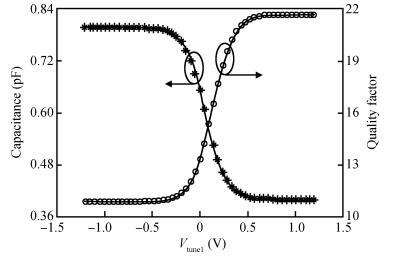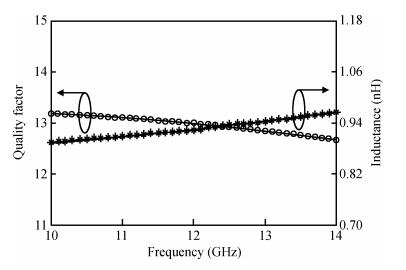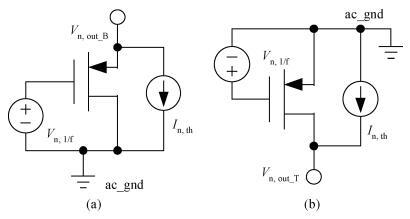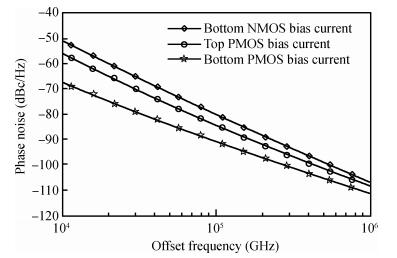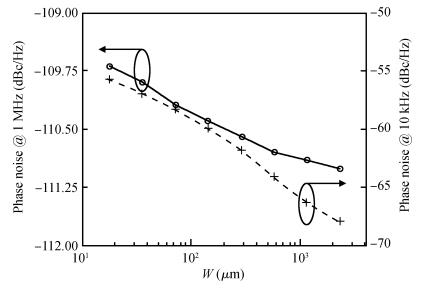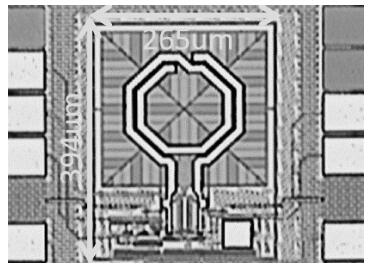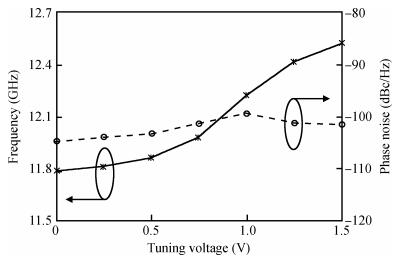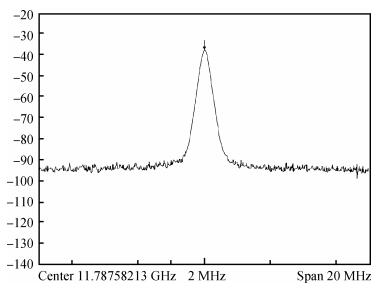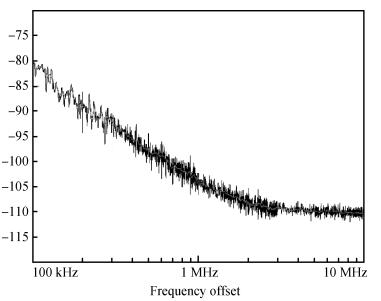| Citation: |
Zhixiong Sheng, Fengqi Yu. A low-power current self-adjusted VCO using a bottom PMOS current source[J]. Journal of Semiconductors, 2014, 35(9): 095006. doi: 10.1088/1674-4926/35/9/095006
****
Z X Sheng, F Q Yu. A low-power current self-adjusted VCO using a bottom PMOS current source[J]. J. Semicond., 2014, 35(9): 095006. doi: 10.1088/1674-4926/35/9/095006.
|
A low-power current self-adjusted VCO using a bottom PMOS current source
DOI: 10.1088/1674-4926/35/9/095006
More Information
-
Abstract
This paper presents the design and implementation of a current self-adjusted VCO with low power consumption. In the proposed VCO, a bottom PMOS current source instead of a top one is adopted to decrease the tail noise. A current self-adjusted technique without additional external control signals is taken to ensure the VCO starts up in the whole band while keeping the power consumption relatively low. Meanwhile, the phase noise of the VCO at the low frequency (high Cvar) can be reduced by the technique. The circuit is implemented in 0.18 μm CMOS technology. The proposed VCO exhibits low power consumption of < 1.6 mW at a 1.5 V supply voltage and a tuning range from 11.79 to 12.53 GHz. The measured phase noise at 1 MHz offset from the frequency 11.79 GHz is -104.7 dBc/Hz, and the corresponding FOM is -184.2 dBc/Hz. -
References
[1] Liu S L, Tian X C, Hao Y, et al. A bias-varied low-power K-band VCO in 90 nm CMOS technology. IEEE Microw Wireless Compon Lett, 2012, 22(6):321 doi: 10.1109/LMWC.2012.2197817[2] Lin C A, Kuo J L, Lin Y, et al. A 24 GHz low power VCO with transformer feedback. IEEE Radio Frequency Integrated Circuits Symposium, 2009:75 http://ieeexplore.ieee.org/xpl/articleDetails.jsp?tp=&arnumber=5135493&openedRefinements%3D*%26filter%3DAND%28NOT%284283010803%29%29%26pageNumber%3D2%26rowsPerPage%3D100%26queryText%3D%28+wang++h.+o.au%29[3] Tanabe A, Hijioka K, Nagase H, et al. A low-power, small area quadrature LC-VCO using miniature 3D solenoid shaped inductor. IEEE Radio Frequency Integrated Circuits Symposium, 2009:263 http://ieeexplore.ieee.org/xpls/icp.jsp?arnumber=5135536[4] Huang Y, Wu D, Zhou L, et al. A 23 GHz low power VCO in SiGe BiCMOS technology. Journal of Semiconductors, 2013, 34(4):045003 doi: 10.1088/1674-4926/34/4/045003[5] Mrakami R, Ito T, Okada K, et al. An ultra-compact LC-VCO using a stacked-spiral inductor. IEICE Electron Express, 2011, 8(7):512 doi: 10.1587/elex.8.512[6] Park B, Lee S, Choi S, et al. A 12 GHz fully integrated cascade CMOS LC VCO with Q-enhancement circuit. IEEE Microw Wireless Compon Lett, 2008, 18(2):133 doi: 10.1109/LMWC.2007.915136[7] Zhang C, Wang Z, Zhao Y, et al. A 15 GHz, -182 dBc/Hz/mW FOM, rotary traveling wave VCO in 90 nm CMOS. IEEE Microw Wireless Compon Lett, 2012, 22(4):206 doi: 10.1109/LMWC.2012.2189100[8] Demirkan M, Bruss S P, Spencer R R. Design of wide tuning-range CMOS VCOs using switched coupled-inductors. IEEE J Solid-State Circuits, 2008, 43(5):1156 doi: 10.1109/JSSC.2008.920346[9] Yin X, Ma C, Ye T, et al. A low-phase-noise LC-VCO with enhance-Q varactor for use in a high sensitivity GNSS receiver. Journal of Semiconductors, 2012, 33(5):055002 doi: 10.1088/1674-4926/33/5/055002[10] Hegazi E, Sjöland E, Abidi A A. A filtering technique to lower LC oscillator phase noise. IEEE J Solid-State Circuits, 2001, 36(12):1921 doi: 10.1109/4.972142[11] Jerng A, Sodini C G. The impact of device type and sizing on phase noise mechanisms. IEEE J Solid-State Circuits, 2005, 40(2):360 doi: 10.1109/JSSC.2004.841035[12] Yin J, Luong H C. A 57.5-90.1 GHz magnetically tuned multimode CMOS VCO. IEEE J Solid-State Circuits, 2013, 48(8):2013 http://repository.ust.hk/ir/Record/1783.1-59538[13] Hou J A, Wang Y H. A 5 GHz differential colpitts CMOS VCO using the bottom PMOS cross-coupled current source. IEEE Microw Wireless Compon Lett, 2009, 19(6):401 doi: 10.1109/LMWC.2009.2020038[14] Razavi B. Design of analog CMOS integrated circuits. Xi'an:Xi'an Jiaotong University Press, 2002 -
Proportional views





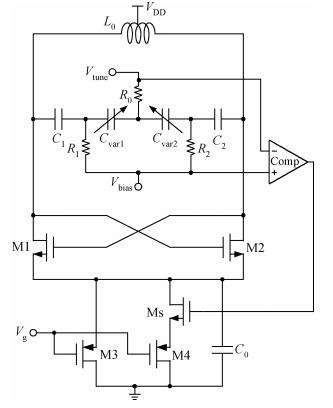
 DownLoad:
DownLoad:
